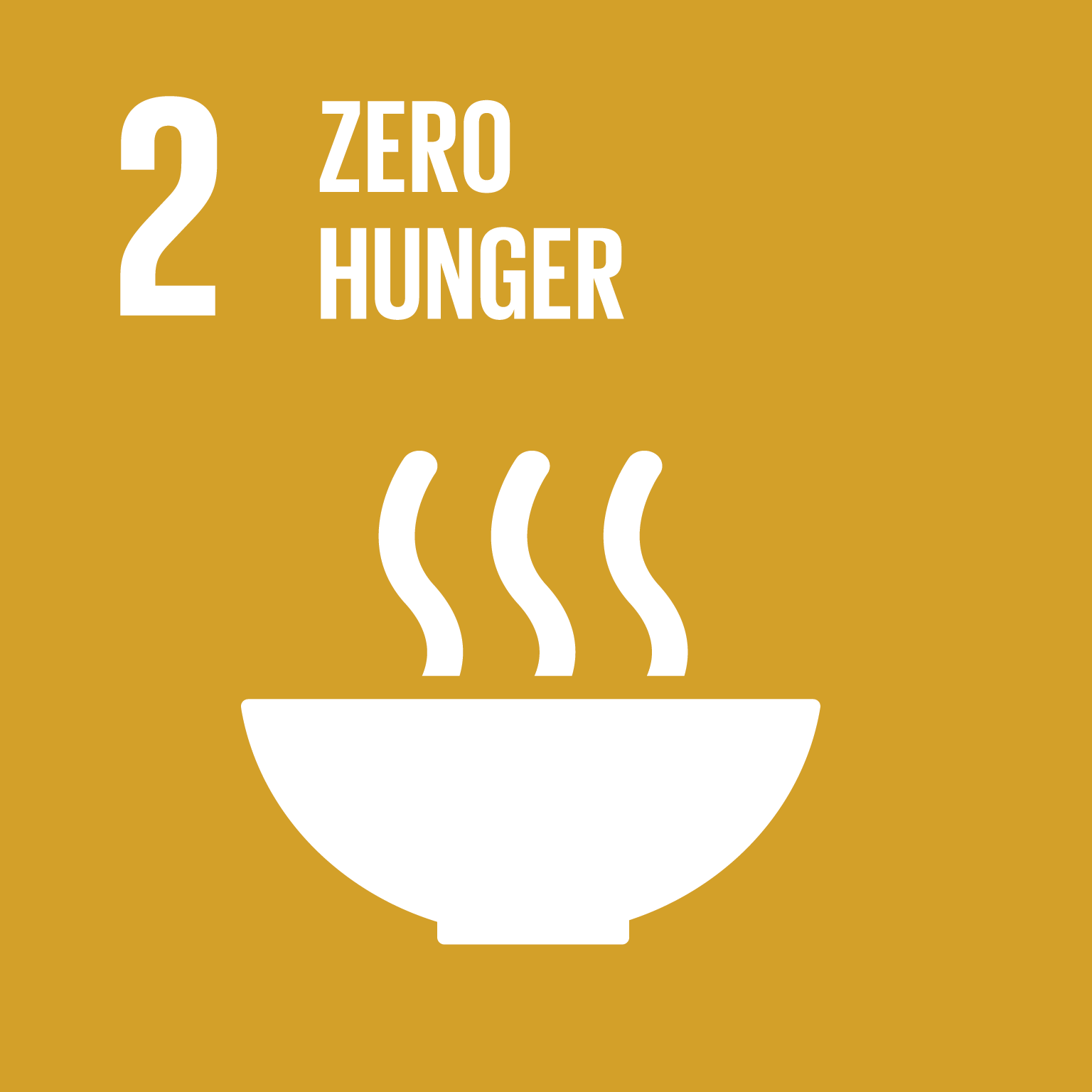Global Civil Society & the UN Sustainable Development Goals
Goal 2: Zero Hunger
Goal 2 is about creating a world free of hunger by 2030.The global issue of hunger and food insecurity has shown an alarming increase since 2015, a trend exacerbated by a combination of factors including the pandemic, conflict, climate change, and deepening inequalities.
By 2022, approximately 735 million people – or 9.2% of the world’s population – found themselves in a state of chronic hunger – a staggering rise compared to 2019. This data underscores the severity of the situation, revealing a growing crisis.
In addition, an estimated 2.4 billion people faced moderate to severe food insecurity in 2022. This classification signifies their lack of access to sufficient nourishment. This number escalated by an alarming 391 million people compared to 2019.
The persistent surge in hunger and food insecurity, fueled by a complex interplay of factors, demands immediate attention and coordinated global efforts to alleviate this critical humanitarian challenge.
Extreme hunger and malnutrition remains a barrier to sustainable development and creates a trap from which people cannot easily escape. Hunger and malnutrition mean less productive individuals, who are more prone to disease and thus often unable to earn more and improve their livelihoods.
2 billion people in the world do not have regular access to safe, nutritious and sufficient food. In 2022, 148 million children had stunted growth and 45 million children under the age of 5 were affected by wasting.
| Name | Acronym | Founded | City HQ | Country/Territory HQ | Type I | Type II |
|---|---|---|---|---|---|---|
World Hunger Year |
WHY | 1975 | New York NY | USA | G | |
World in Need |
WIN International Associates | 1991 | Crowborough | UK | G | |
World Indigenous Tourism Alliance |
WINTA | 2012 | Porirua | New Zealand | C | |
World Information Transfer |
WIT | 1986 | New York NY | USA | F | |
World Instant Noodles Association |
WINA | 1997 | Tokyo | Japan | F | |
World Mountain People Association |
WMPA | 2001 | Paris | France | C | |
World Neighbors |
WN | 1951 | Oklahoma City OK | USA | G | v |
World Organisation for Animal Health |
WOAH | 1924 | Paris | France | B | g |
World Organization for Early Childhood Education |
OMEP | 1948 | Buenos Aires | Argentina | C | y |
World Organization of the Scout Movement |
WOSM | 1907 | Kuala Lumpur | Malaysia | B | |
World Packaging Organisation |
WPO | 1968 | Vienna | Austria | C | y |
World Ploughing Organization |
WPO | 1952 | Athy | Ireland | C | |
World Rainforest Movement |
WRM | 1986 | Montevideo | Uruguay | F | |
World Relief Refugee Services |
WRRS | Baltimore MD | USA | G | ||
World Renew |
1962 | Burlington ON | Canada | G | ||
World Runners |
WR | 1978 | Greenbrae CA | USA | F | f |
World Shiology Forum |
WSF | 2017 | Beijing | China | J | |
World Soy Foundation |
WSF | 2006 | St Louis MO | USA | G | f |
World Trade Organization |
WTO | 1995 | Geneva | Switzerland | B | gt |
World Union of St Bernard Clubs |
WUSB | 1967 | Faulensee | Switzerland | E | |
World Union of Wholesale Markets |
WUWM | 1958 | Rungis | France | C | |
World Vision International |
WVI | 1950 | London | UK | B | |
World Watusi Association |
1985 | Walnut Springs TX | USA | N | ||
World Wide Fund for Nature |
WWF | 1961 | Gland | Switzerland | F | f |
World-Wide Opportunities on Organic Farms |
WWOOF | 1971 | Sydney NSW | Australia | F | |
World's Poultry Science Association |
WPSA | 1912 | Beekbergen | Netherlands | B | y |
WorldFish |
1975 | Bayan Lepas | Malaysia | E | ||
YOU Stiftung - Bildung für Kinder in Not |
YOU Foundation | 1992 | Düsseldorf | Germany | G | f |
Young Professionals for Agricultural Development |
YPARD | 2005 | Berlin | Germany | F | t |
ZOA |
1973 | Apeldoorn | Netherlands | G |
